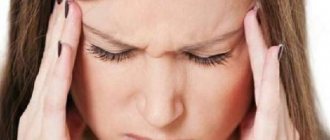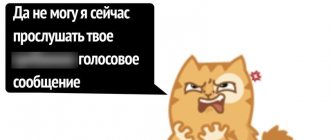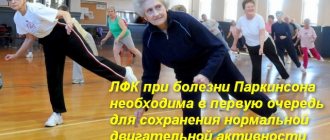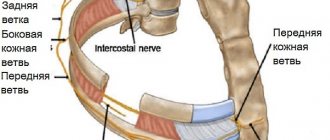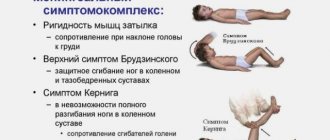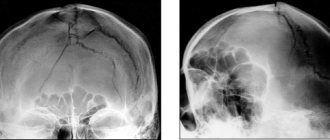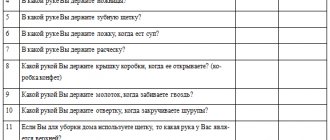Technique of striking
The term “technique of striking” (and defenses) includes the dynamics of movements that simulate strikes, defenses, movements and other actions of a boxer. They are not associated with exercises in pairs, where one boxer counteracts the action of the other, i.e., where a blow is directly delivered or protection from a blow is made. Movements and actions are studied and improved individually, in exercises designed to develop clear coordination, in stereotypical movements that make up a boxer's techniques.
The study of technique, as is already known, begins with performing strikes and defenses in various positions of the legs and torso, standing still and while moving. The biomechanics of a boxer’s action is often called “movement mechanics” in practice. These actions are studied and improved first without a partner, then with the help of a coach in exercises with boxing paws or with a bag, stuffed and pneumatic bags, so that the athlete can better control his actions, more accurately determine the direction and force of blows from different positions.
When performing strikes from the side or from below, the fist should be sent forward as if it were to pass the obstacle in the intended place, “pierce” it and continue to move for some time. If you artificially stop the movement of the hand at the intended place, this will inevitably create stiffness and tension in the limb, and will prevent you from achieving free, fused actions in delivering several blows in a row.
Studying and improving the technique of performing blows must begin with straight ones, then move on to blows from the side and from below (of the same name and of the same name), then link individual blows into different combinations: two straight ones one after another to the head, a straight left one to the body and a side right one to the head, side left to the head, bottom right to the torso, etc. If, when transferring body weight to the left leg, a blow is made with the left hand, it is a blow of the same name. If the blow is performed with the left hand, and the body weight is transferred to the right leg, it is opposite.
Let's look at the basic exercises for learning strikes. It is advisable to start studying kicks from the frontal position of the legs, so that students can clearly feel the movement of body weight from one foot to the other, with actions of a translational and rotational nature, then move on to studying kicks from the lateral position.
Different and identical blows to the head and torso (Fig. 15) should be studied and improved equally, since in combat episodes they alternate all the time.
| Rice. 15. Direct strike technique |
Starting position: legs shoulder-width apart, feet parallel, arms bent at the elbows, hands somewhat clenched into fists and directed forward, thumbs up. The head is lowered, the boxer looks straight. When moving the body weight to the right leg, the torso turns to the right, at the same time the left hand performs a direct blow. The left leg weakens somewhat, the heel lifts off the floor, and the left thigh rotates to the right. When moving the body weight to the left leg, a blow with the right hand is simulated, the right thigh and torso turn to the left. When moving your body weight from one leg to the other, you must alternately move forward your left and then your right hand. This exercise is also performed with a step to the side, forward and backward.
When moving the body weight to the left leg, a direct blow with the left is carried out with the body turning to the right (actions of the same name). Shifting the body weight to the right leg, strike directly with the right hand while turning the body to the left. These exercises are also performed with steps to the side, forward and backward.
From the left side position of the fighting stance, standing still with the body weight transferred to the left leg, a direct blow is performed with the left hand, then with the right (opposite). With the transfer of body weight to the right leg, a direct blow with the right (of the same name) is carried out, then a straight blow with the left (of the same name). In this case, the torso and hip rotate accordingly, as in the exercise in a straight position.
Exercises in delivering direct blows to the head from a side position (both the same and different ones) are performed with a step forward, to the sides and back in the left and right positions.
Performing a direct left blow to the body with a slant to the right is performed as follows. From the left-sided fighting position, tilt the body to the right with a direct blow with the left. The fist turns its back side up. The body weight is located on both, slightly bent, legs or more on the left leg. Performing a direct right blow to the body is performed with the body tilted to the left. In the same sequence (first the same sequence, then the opposite one with alternating transfer of body weight from leg to leg, in a straight and lateral position, with movement forward, backward and to the sides), the technique of performing single blows from the side and from below is studied and improved (Fig. 16 and 17).
| Rice. 16. Side impact technique. | Rice. 17. Technique of blows from below. |
Having mastered the dynamics of single straight, side and bottom strikes, you should move on to performing two consecutive strikes: two straight, two side or two from below. These exercises should be improved together - first on the spot in a straight and lateral position, then with steps forward, to the sides and back (opposite, same and combined) when moving the body weight to one and the other leg with the action of either the left or the right hand. As an example, here are a few exercises.
1. From a straight position, moving the body weight to the left leg, perform a direct blow with the right hand to the head or torso. Switching to the right leg, perform a direct blow with the left to the head or torso.
2. From the left-sided fighting position, when moving the body weight to the left leg, a direct left blow is performed to the head with the body turned to the right. Remaining on the left leg, the body is turned to the left with a direct blow with the right hand.
3. When stepping back - a direct blow with the right hand, when pulling the left leg towards the right - a straight blow with the left hand. Do similar exercises, with steps to the sides.
4. From the left-sided position when stepping forward with the body weight moving to the left leg - a side kick with the left; when transferring body weight to the right leg - straight right to the head.
5. From the left-sided position with the body weight transferred to the right leg, a direct blow with the left is performed to the body with a slope to the right, with the body weight transferred to the left leg - a direct blow with the right to the head. The same exercise is performed with movement forward and to the sides.
6. From the left-sided fighting position, a direct blow with the right hand is performed to the body with a slight tilt to the left, followed by a direct blow with the left hand to the head, moving the body weight to the right leg.
7. From the left-sided position, make two subsequent blows from below with the left and right - to the head and to the torso. The body weight is transferred first to the left leg, then to the right, and also alternately from one leg to the other.
In subsequent exercises to study and improve the technique of striking, you should combine direct strikes with side and bottom strikes, side strikes with bottom strikes, etc. (often for a series of several quick strikes it is more convenient not to transfer body weight from one leg to the other).
From the left-sided fighting position, a direct blow to the head with the left is performed with a step forward and immediately a side blow to the head with the right. When performing these movements, the body weight is mainly on the left leg.
From a straight position, a step is taken to the right, with the body weight moving to the right leg, a direct blow is made with the right and now a side blow or a blow from below with the left to the head. From a left-sided position, with a step forward and shifting the body weight mainly to the left leg, a direct blow with the right is performed to the torso, then a side blow with the left to the head.
From the same starting position, with a step back and support on the right leg, a direct blow with the right hand is performed to the head and a subsequent side blow with the left to the head.
Left-handed boxers who box in a right-handed stance make all these movements according to their fighting position.
Complex exercises include series of strikes. In this case, the body weight can move slightly from one leg to the other (which is little noticeable, since the movements are performed quickly) in combination with slight turns of the torso and hips, or be on one of the legs. Since these actions require greater skill, training should begin when the boxer has sufficiently mastered the technique and tactics of single and double strikes and defensive techniques. Exercises for mastering the technique of striking in series prepare boxers to conduct complex forms of combat at medium and close distances.
The movements of strikes from the side and from below are done in the same way. Striking exercises should be performed moving forward and backward. Having mastered the technique of straight, side and bottom blows, they begin to perform them in different combinations: straight to the head or torso - side, straight - from below, side - from below, from below - side, etc. For example, starting position: arms bent at the elbows, the hands are clenched into fists and directed forward. When stepping forward, the left foot strikes directly to the head with the right; when stepping with the right foot, a direct blow to the head with the left. Then the exercise is performed in the same way: when stepping forward with the left foot, a direct blow with the left hand; when stepping with the right, a straight blow with the right. The torso and hips turn respectively to the left and to the right. Or: with a left step forward, a straight left to the head, with a right side step with a right to the head. Or: with a step from the left side to the right to the head, with a step from the right left from below to the head. Similar actions, both of the same name and of different names, are performed with a backward movement. For example, with a right step back - right straight to the head, with a left step back - straight or side or from below left to the head or torso, etc. Both the same and opposite ones, a blow is made for each step, the blows alternate in different combinations ( cycles of two, three and four beats).
To develop high coordination of movements, you should alternate strikes of the same name with different ones. For example, two blows are delivered in the same way and two in opposite directions, or one in the same way, the next two in opposite directions, etc. Or: when moving in a circle with continuous side steps, perform a direct blow with the left foot from the left foot, and a straight right one when taking steps with the right. Then move on to different exercises: when stepping with the right, perform a straight left, with the left foot attached, perform a kick with the right. Such exercises are difficult, but they must be repeated until they are confidently performed, first slowly and separately, then together one after the other.
Guidelines for studying and improving striking techniques
In order to more successfully master the rotation of the torso and transfer of body weight from leg to leg, and to develop a sense of “two-handedness,” the technique of single strikes should be studied from a frontal position. Exercises while standing in place from different combat positions with steps forward, backward and to the sides should be studied in a column of 4-6 people. Execution is carried out counting, separately, with stops so that the correctness of the actions of each student can be checked. This is very important, because incorrectly learned basic movements can become the main obstacle to the further growth of sportsmanship.
After the group has mastered individual movements, they should move on to mastering the skills of several combined actions, for example, after direct blows of the same name from a straight position, perform the same blows of the same name, that is, when performing actions with the right hand, move the body weight to the leg of the same name. Exercises involving continuous movement should be performed in a circle, facing the center; if they require lateral movement, then students can leave the column and practice them independently. Each student, moving in all directions, individually improves the technique of striking, moves from one action to another, and combines them into different combinations.
As you master a variety of movements, the pace of the exercises should be increased. The most difficult thing at this stage is connecting direct blows with blows from the side and from below. We can recommend performing two or three actions in different combinations, for example: straight - straight, straight - side, side - below, etc.
Accelerating the strikes should not increase the tension associated with emphasizing the “strike”; combinations should be performed smoothly - then the movements will be accurate.
After a group lesson on striking techniques, the trainer moves on to individual study and improvement of boxers' punches on the paw, bag and punching bag.
First, single strikes are applied from a place from all positions (both the same and opposite), then with a step forward, backward and to the sides. Further actions are connected in two or three blows in various combinations and from different positions. In order to develop speed of action, the teacher first indicates which strikes to use, then sets certain tasks, unexpectedly putting out either the left or the right paw to strike (directly, from the side or from below). Then he gives the initiative to the student, who arbitrarily, at his own discretion, delivers one or two successive weak blows. The desire of a beginner to deliver strong blows before he has sufficiently mastered the technique forces him to strain unnecessarily, which leads to inaccurate actions and unnecessary movements. It is necessary to achieve light, not tense blows, but at the same time fast and accurate. To achieve this, you should widely use pneumatic bags and rubber balls for exercises.
Exercises in striking while moving forward, backward and in a circle should be carried out after the boxer has mastered the actions of standing in place and with steps in a frontal and lateral position. It is best to do this in a column without interfering with each other. The coach must ensure that students maintain the correct fist position when performing any strikes (fingers bent and pressed to the palm, thumb pressed to the middle phalanx of the index finger).
